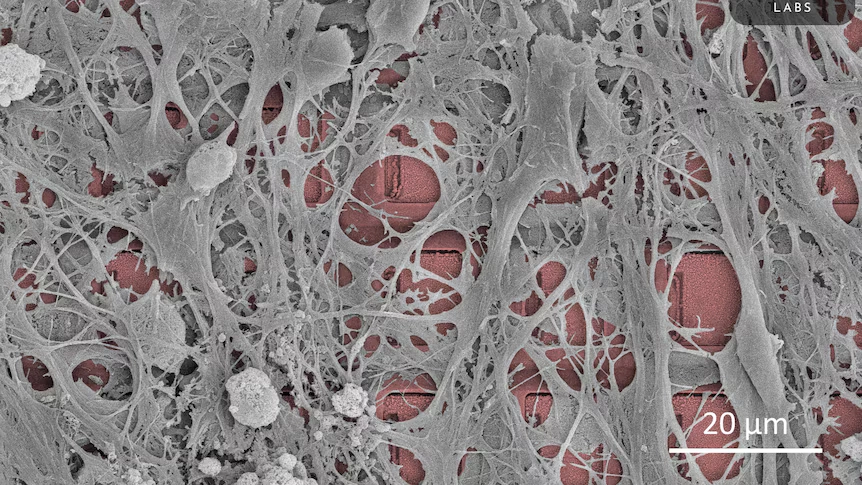"Embrace The Next Evolution"
DNA Machines | Programmable General Purpose Computing

For decades, the silicon chip has reigned supreme as the engine of computation, powering everything from our smartphones to supercomputers. But a new revolution is brewing in the laboratories, one that harnesses the very building blocks of life: DNA. Scientists are increasingly exploring the potential of DNA machines, intricate molecular systems capable of performing computations, offering a tantalizing glimpse into a future where biology and information technology converge to create programmable, general-purpose computing.
The concept might sound like science fiction, but the underlying principles are rooted in the elegant and precise nature of DNA. The double helix, with its four nucleotide bases (Adenine, Guanine, Cytosine, and Thymine), acts as a natural information storage system. The specific pairing rules (A with T, and C with G) provide a mechanism for molecular recognition and interaction. Researchers are leveraging these inherent properties to design and build nanoscale machines that can manipulate DNA strands, perform logical operations, and even make decisions.
How Do DNA Machines Work?
At its core, DNA computing relies on the principles of molecular self-assembly and hybridization. Researchers design specific DNA sequences that, when mixed in a solution, will interact in predictable ways. These interactions can be engineered to perform logical gates, the fundamental building blocks of computation. For instance:
- AND Gate: Two specific DNA strands must be present to trigger a downstream reaction.
- OR Gate: The presence of either of two specific DNA strands will initiate the process.
- NOT Gate: The presence of a specific DNA strand inhibits a reaction.
By carefully chaining together these molecular logic gates, scientists can create complex circuits capable of performing calculations, solving puzzles, and even controlling molecular processes.
The Promise of General-Purpose DNA Computing:
While early DNA computers were often designed for specific tasks, the field is rapidly advancing towards the realization of programmable, general-purpose DNA computers. This ambition hinges on developing systems that can:
- Store and Retrieve Information: Utilizing DNA sequences as memory units.
- Execute Instructions: Implementing a set of fundamental operations that can be combined in various sequences.
- Be Programmed: Allowing users to input instructions and data to perform different computations without physically rebuilding the hardware.
Several approaches are being explored to achieve this goal. One promising avenue involves the development of DNA strand displacement reactions, where carefully designed DNA strands can displace other bound strands in a predictable and controllable manner. This allows for the construction of complex and cascading reactions that can implement sophisticated algorithms.
Another exciting development is the integration of enzymes into DNA-based systems. Enzymes can act as biological catalysts, accelerating specific DNA manipulation processes and enabling more complex and efficient computations.
Potential Applications Across Disciplines:
The implications of programmable general-purpose DNA computing are vast and span numerous fields:
- Medicine and Diagnostics: Imagine nanoscale devices circulating within the body, capable of detecting disease markers with unprecedented sensitivity, delivering drugs precisely to targeted cells, or even performing complex diagnostic tests at the molecular level.
- Biotechnology and Materials Science: DNA machines could be used to assemble novel biomaterials with tailored properties, control gene expression for synthetic biology applications, or even build self-replicating nanoscale factories.
- Information Technology: While not poised to replace silicon chips in conventional computing anytime soon, DNA computers offer unique advantages for specific tasks, such as massive parallel processing for complex search algorithms or energy-efficient computation for specialized applications.
- Fundamental Research: Exploring the computational capabilities of DNA can provide deeper insights into the fundamental processes of life and the origins of biological information processing.
Challenges and the Road Ahead:
Despite the immense potential, the field of DNA computing faces significant challenges:
- Scalability and Complexity: Building and controlling large-scale DNA circuits with the complexity of electronic computers remains a formidable task.
- Speed and Efficiency: Biochemical reactions are inherently slower than electronic processes.
- Reliability and Error Rates: Ensuring the accuracy and robustness of DNA-based computations in a noisy molecular environment is crucial.
- Integration and Interface: Developing effective ways to interface DNA computers with the macroscopic world and interpret their outputs is an ongoing challenge.
However, the rapid progress in DNA nanotechnology, synthetic biology, and microfluidics is steadily chipping away at these limitations. Researchers are developing more sophisticated design principles, exploring novel biochemical mechanisms, and engineering more robust and controllable systems.
A Biological Future of Computation:
The journey towards programmable general-purpose DNA computing is still in its early stages. Yet, the breakthroughs achieved so far offer a compelling vision of a future where the lines between biology and technology blur. Imagine a world where computation is not confined to silicon but is seamlessly integrated with the very fabric of life. While the widespread adoption of DNA computers might still be decades away, the ongoing research and innovation in this exciting field hold the key to unlocking a new era of biological computation with transformative potential for medicine, technology, and our understanding of life itself. As we continue to unravel the computational power hidden within the double helix, the biological revolution in computing is only just beginning.









